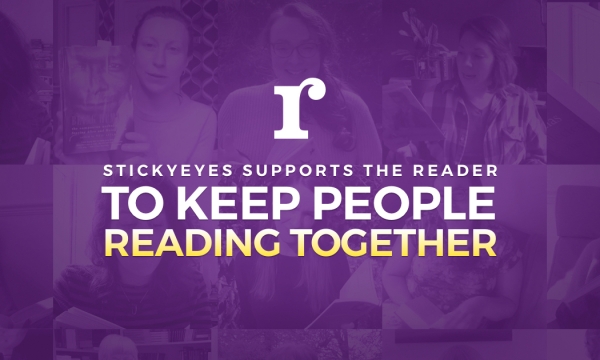
It is oft said that a picture is worth a thousand words, but are your words reliant on that picture?
We are increasingly communicating through visual mediums, largely due to easy access to visual material, the instant nature of digital communication and, of course, faster and cheaper internet connections.
We take our information in infographics, our conversation through facial expression and our education through video delivery. We are reverting to a reliance on symbolism and visual metaphor over the written word, but why?
Studies from the European Journal of Cognitive Psychology suggest that this may be because imagery is quicker to digest, easier to retain, and easier to share.

When content is abundant and the consumer’s time is both limited and fleeting, brands are becoming more aware of the importance of quality imagery, content, or marketing materials. This is essentially what focuses the viewers’ attention, drawing them into your world and getting your message heard. Photographic representation of your product is the life blood of almost all FMCG brands.
Digitally this is exactly the same. Amidst the sea of blog posts, news articles, link-bait and spam content we are bombarded with on a daily basis, imagery is playing a larger role in deciding who gets to be heard.
SEO is more than the effective management of your meta information. With more users regularly getting their news from social media feeds or news aggregation services such as Flipboard, YouTube or feedly, it becomes more important to stand out from the crowd within that tiny window of the new “feed / grid” real estate.
"How your piece looks, and the physiological nature of your headline, beguile the content of the embedded piece."
As much as the headline should not be an afterthought to your content neither should the lead image selection. Social media channels and news RSS aggregators increasingly populate their feeds with additional content information such as featured imagery, thumbnails and author information.

Most content writers start with their headline. This is their promise to their reader; a clearly defined desire to communicate the answer to said headline within the precious few lines of the article. But in an increasingly visual world how can we ensure our image asks that question as well?
As the image continues to dominate the written word in determining our physical actions, relying on generic Google searches, low cost stock photography, or poorly executed graphical representations becomes as bad as writing:
“This is my content; don’t read it – it’s generic,
repetitive and ****!”
into the headline of your post. Brands constantly curate their written and verbal external communication, so why would the same not be true for visual communication?
The ‘simplicity of Stock’
"The simplicity of stock is a syndrome often caused by inadequate commitment to the importance of your visual choice, and the fear of stepping outside of their aggregated stock fed solutions."
This individuality, this bold leap into the creative unknown, can be the drive for brands to forge new exciting visual identities, create recognisable visual stimuli amongst their sea of aggregate news and compel the user to pre ordain this content with a “worthy” tag, guaranteeing the content and subsequent content gets a click, link or view. So how can we develop a collection of unique, individual images to support our content?
Start with the content as a whole and ask if this a one off article, sat alone on your site, or part of a wider series? If your content is part of a series, then consider the style of the images together and try to create a visual connection between these pieces, compelling the reader to discover your other content as well as the piece they are already connected to. Your aim with this content is to turn a reader into a follower. Create a style of image, this maybe illustrative, bespoke photographic or even well selected stock.
...Stock!!?
Yes, I know I said stay away from stock, but before you crush me with the “hypercritical” hammer, let me explain that I do think there is a place in the digital marketing world for stock imagery. Not all content deserves a creative campaign, and not all writers are experts with visuals. So we need to rely on others to help us visualise our stories.

But we are the aggregators of this visual domain, and thus are masters of our own fate. If your article refers to a financial issue, this does not mean you need to simply write “finance” into your standard stock photographic service and expect a unique and thought provoking image to appear on the first page of the results. You need to focus this search, and use your own creative “meta – tagging” to find a suitable and relevant search term to find that image. Look deeper into your content and at what are you trying to say, and try to condense this into an image. Use that to find your stock imagery.
And consider alternative stock imagery providers. There are now numerous bespoke stock imagery sites popping up in recent years, run by young creative photographers just looking to get their imagery seen. These sites usually operate under the public domain licensing agreement, allowing you to use their images for commercial purposes without spending a penny (although usually a credit note, or link back is a fair digital hat tip). These images are often completely unique and can lead to a very thought provoking visual series driven by a unique visual stimuli.

But what if you have a creative department?
Look at categorising your content plan into a series, or building a domain of content under the blanket of a specific title or heading. This will allow you to target the imagery or create related sub branding visuals to support and promote your content.
This visual style can be as involved as you wish. It can range from simple thumbnails and colour schemes, right through to unique logos, typographic styles and illustrative designs. This is effectively about ‘branding’ your content.
Treat your image selection as a massive game of Pictionary. Try to get your reader to understand what the article is about, before they have read a single word. If you are writing as part of supporting sales content, you need to consider the brand guidelines. However, if this is social or blog content, you may be able to style your visuals with a little more creative freedom (within reason).
It is not easy to find that perfect image, and with the increasing nature of reactive content marketing it can often be created as an afterthought. But effective content planning and creative, original visuals need to become a staple part of your content plan if you want to ensure that your content gets seen in an increasingly visual market.
Find out more about our approach to content marketing or browse our video hub to see how we use imagery as part of our wider marketing strategy.




